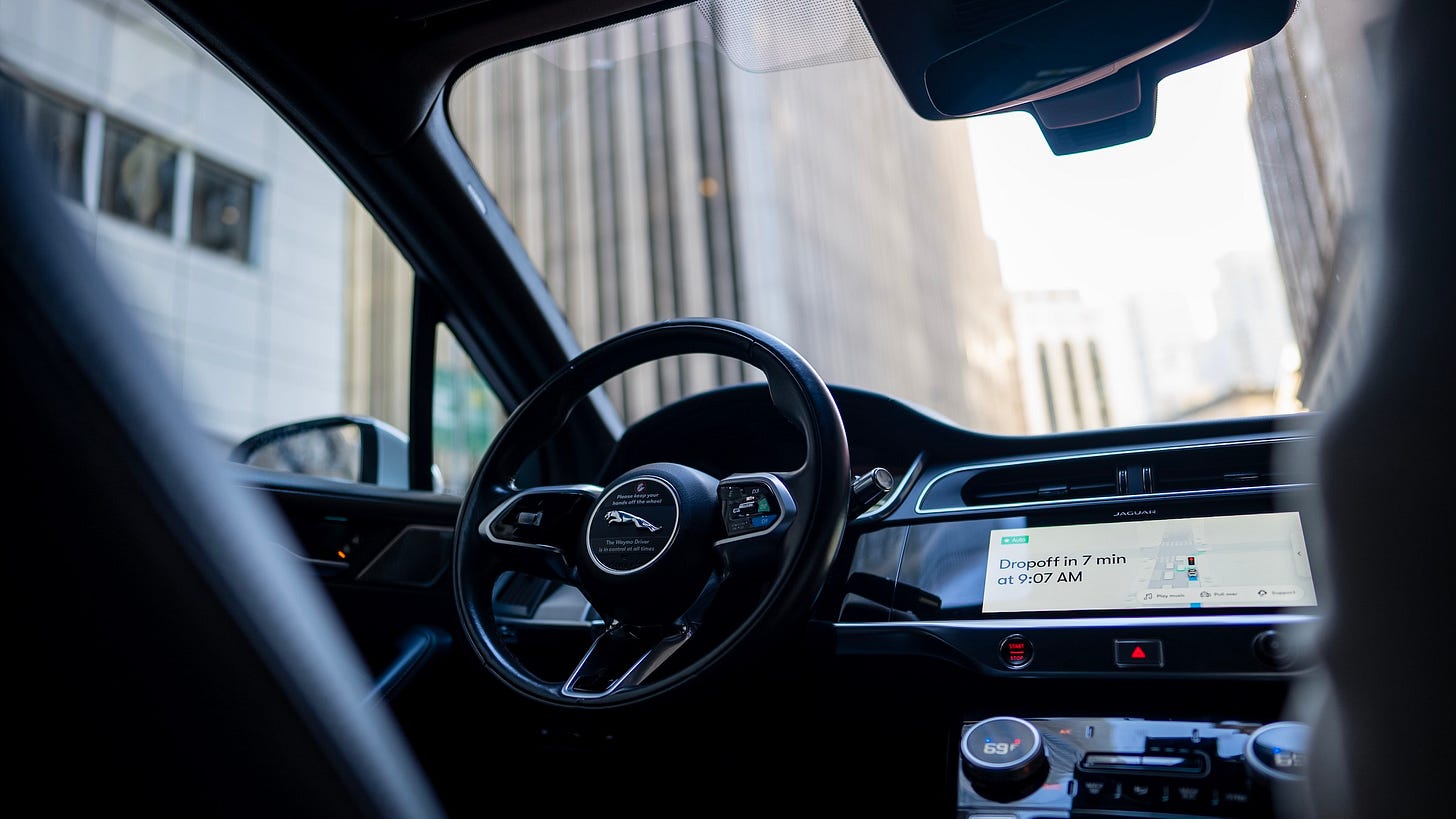Waymo is the rare case where a product genuinely exceeds expectations
Also: Do all founders need to become Instagram influencers? And who’s cutting back on Chipotle?
Hello hello! It’s Dan Frommer, back with The New Consumer. What’s on your mind?
Congratulations to the Dodgers and my LA neighbors on a spectacular World Series victory. The COGS are high on that team, but winning is a business, and the Dodgers also dominated on this year’s Athletic survey of 100+ MLB players: When asked which organizations have good reputations among players, the Dodgers came in first place by far, receiving twice as many votes as the next-best New York Yankees.
Speaking of which, I’ve just landed in New York for a week of meetings and crispy jacket weather. Somehow I’m still going to miss the long-awaited Meadow Lane grand opening — which is finally, probably, maybe, happening later this month — but please let me know if there are any other neat new shops or life-changing lunch spots that I can’t miss.
When’s the last time a new technology product or experience moved you enough to post about it?
It’s hard to think of many that have reached critical mass over the past decade: Snapchat face filters? Covid vaccines? AirPods?
Waymo, the self-driving taxi service developed by Google, is the latest great example. A “first Waymo ride!” Instagram story feels almost obligatory. And even just seeing them everyday in the wild, driving around sans chauffeur with their funny LIDAR dome, is still a tiny thrill.
My first Waymo trip, earlier this summer, started off more in the spirit of a Curb Your Enthusiasm scene, as I had to chase it around a parking lot before it finally looped back around and let me in. It then took an ill-advised route down one of those one-lane, two-way Venice Beach streets, which created enough of a clusterf— that people started yelling at me (as if I had a say! Larrrrry!).
But after a quick manual override to navigate, the situation vastly improved, and the ride to Beverly Hills in my climate-controlled Jaguar SUV was comfortable, quiet, and felt safe. (My second ride, a few weeks later in San Francisco, was flawless, fwiw.) Aside from a few minor quirks that likely wouldn’t have happened with a human driver, it’s easy to see why consumers generally report positive experiences: The Waymo was much more pleasant than an Uber or Lyft, required zero awkward smalltalk, and was competitively priced.
Well over a decade in the making, Waymo, first known as Google’s self-driving car project, is actually working: It’s doing hundreds of thousands of paid, fully autonomous rides per week in five US markets — LA, the Bay Area, Phoenix, Austin, and Atlanta — with Miami, DC, Nashville, and London in the works.
And it’s still early, but Waymo is already capturing meaningful market share.
In the Bay Area, Waymo represents about 5% of consumer spending among the rideshare trio of Uber, Lyft, and Waymo, according to Consumer Edge, which tracks credit and debit card spending data.




